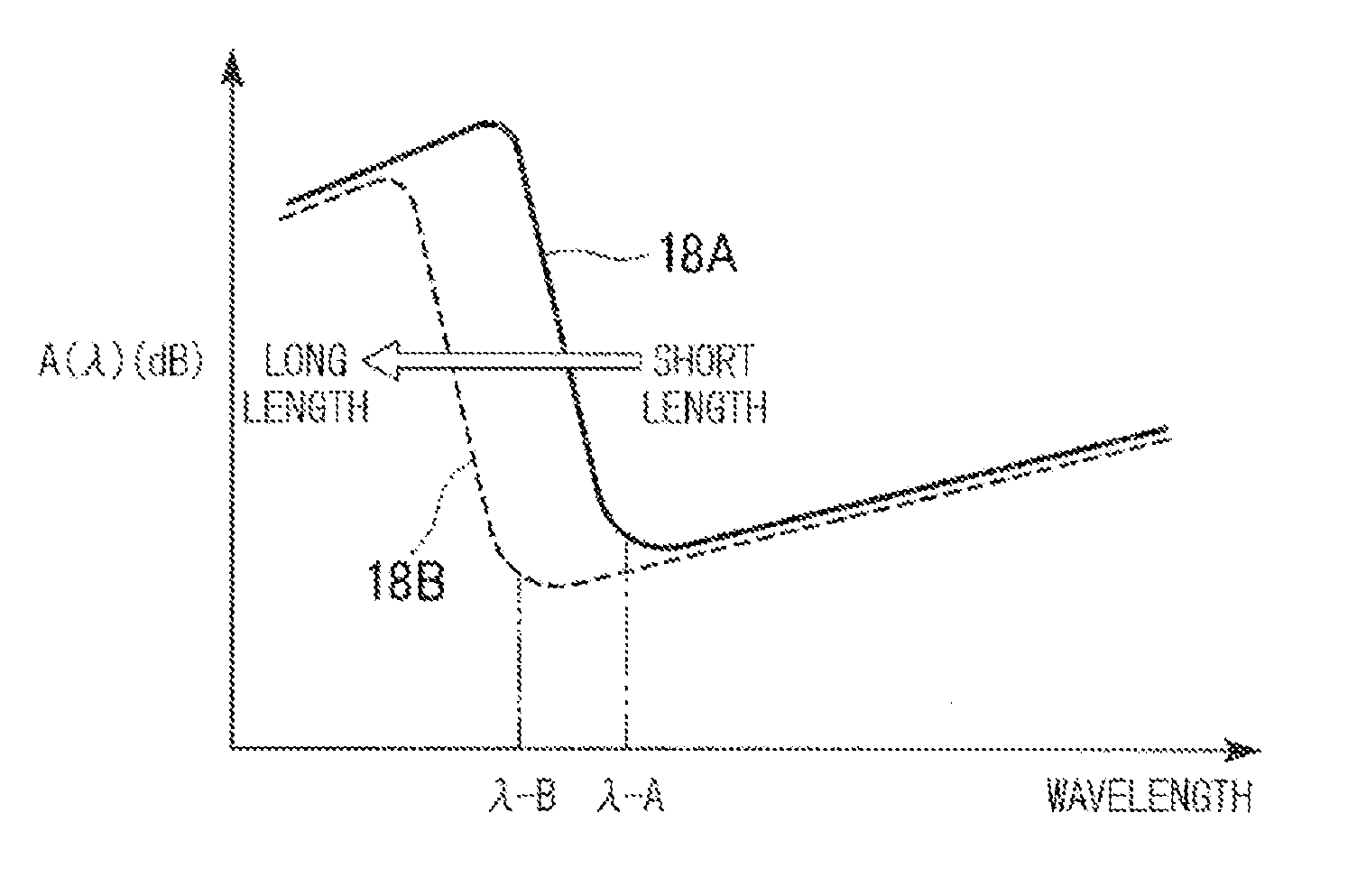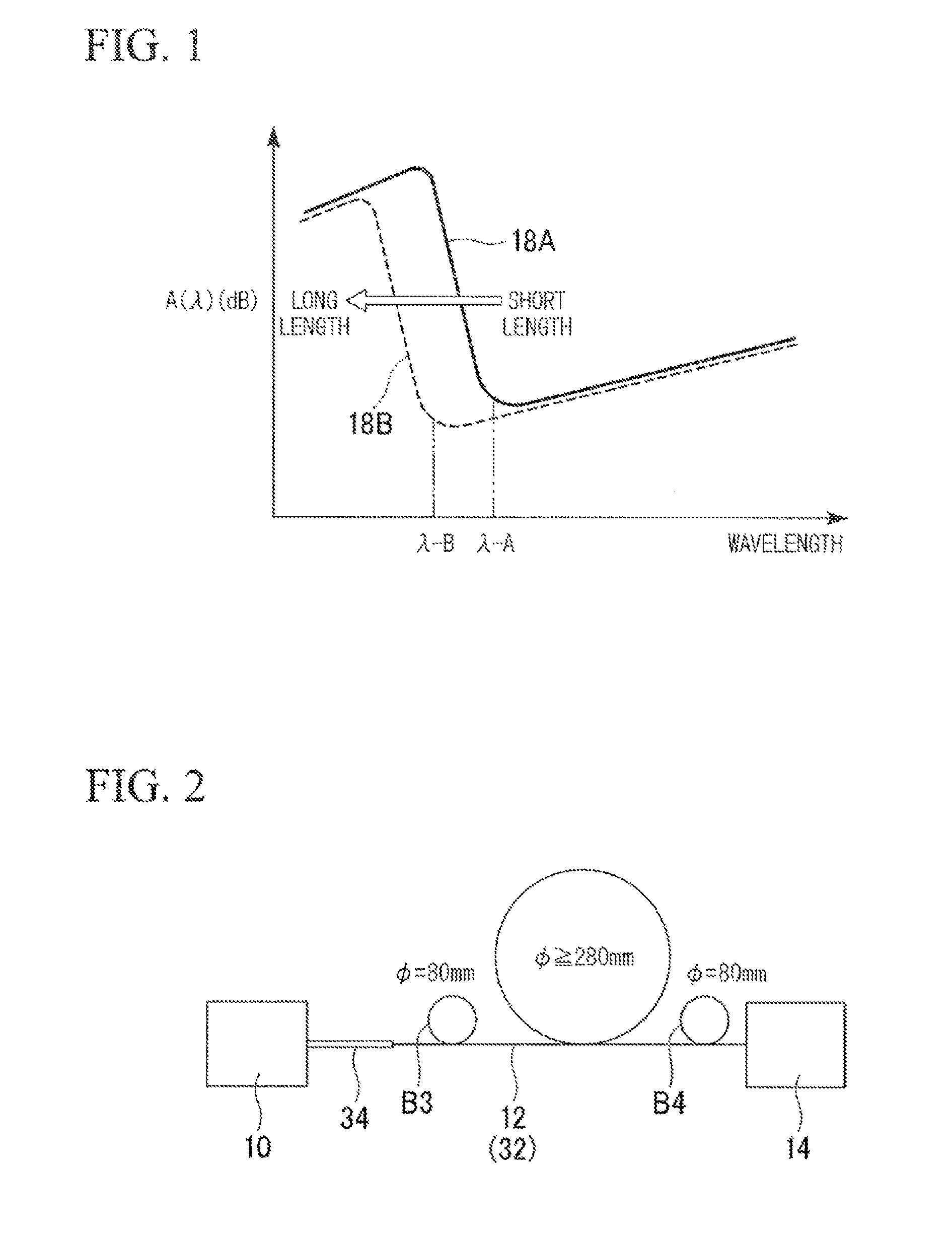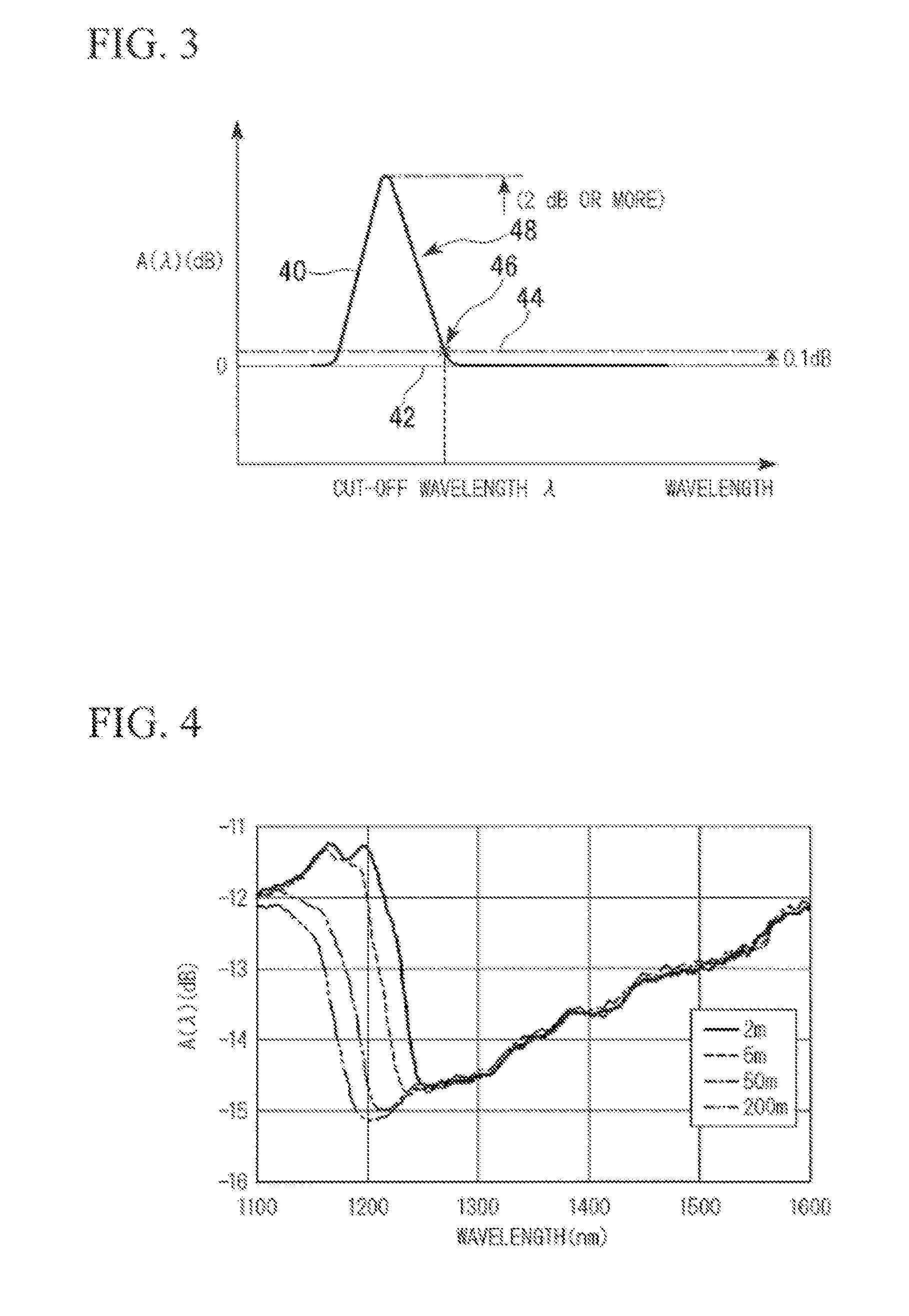Method of measuring cut-off wavelength of optical fiber
a technology of optical fiber and cut-off wavelength, which is applied in the field of optical fiber cut-off wavelength measurement, can solve the problems of difficult to accurately calculate the cut-off wavelength, and difficult to remove the higher order mode, so as to achieve the effect of improving the accuracy at the time of generating the cut-off wavelength
- Summary
- Abstract
- Description
- Claims
- Application Information
AI Technical Summary
Benefits of technology
Problems solved by technology
Method used
Image
Examples
experimental example 1
[0218]The results of a test are illustrated in FIG. 4 showing that the cut-off wavelength of the single mode fiber acquired by measurement changes in accordance with the length of a fiber used in the measurement, in other words, the cut-off wavelength is shortened as the length of the fiber is increased is illustrated in FIG. 4.
[0219]In this experiment, a general single mode fiber used for communication was used as the measurement target fiber, and the power Psig(λ) of transmission light transmitted through the measurement target fiber that was formed by a single mode fiber of various kinds of lengths (2 m to 200) and the power Pref(λ) of transmission light transmitted through the reference fiber having a constant length were measured according to the multi-mode excitation method.
[0220]The wavelength dependency of the ratio A(λ) on the length of the fiber when the ratio A(λ) of the transmission light power Psig(λ) to the transmission light power Pref(λ) was measured is illustrated i...
experimental example 2
[0228]In Experimental Example 2, a measurement target fiber, which has a length of 2 m, configured of a single mode fiber formed by a strand drawn by using the same base material as the base material used for manufacturing the fiber used in Experimental Example 1 will be described.
[0229]In addition, a fiber, which has a length of 200 m, formed by a strand drawn by using the same base material as the base material used for manufacturing the measurement target fiber was used as the reference fiber.
[0230]Next, the power Psig(λ) of transmission light transmitted through the measurement target fiber and the power Pref(λ) of transmission light transmitted through the reference fiber were measured by using the method of the present invention, and the ratio A(λ) of the transmission light power Psig(λ) to the transmission light power Pref(λ) was measured.
[0231]The wavelength dependency of the transmission light power ratio A(λ) at this time is illustrated in FIG. 6.
[0232]In this case, as is ...
experimental example 3
[0239]In Experimental Example 3, a measurement target fiber, which has a length of 22 m, configured of a single mode fiber formed by a low-bending loss fiber will be described.
[0240]In addition, as the reference fiber, a fiber, which has a length of 200 m, formed by a strand drawn by using the same base material as the base material used for manufacturing the measurement target fiber is used.
[0241]Next, the power Psig(λ) of transmission light transmitted through the measurement target fiber and the power Pref(λ) of transmission light transmitted through the reference fiber were measured by using the method of the present invention, and the ratio A(λ) of the transmission light power Psig(λ) to the transmission light power Pref(λ) was measured.
[0242]The wavelength dependency of the transmission light power ratio A(λ) at this time is denoted by a solid line illustrated in FIG. 7.
[0243]In addition, in Experimental Example 3, as a predicted cut-off wavelength of the measurement target fi...
PUM
| Property | Measurement | Unit |
|---|---|---|
| cut-off wavelength | aaaaa | aaaaa |
| length | aaaaa | aaaaa |
| length | aaaaa | aaaaa |
Abstract
Description
Claims
Application Information
 Login to View More
Login to View More - R&D
- Intellectual Property
- Life Sciences
- Materials
- Tech Scout
- Unparalleled Data Quality
- Higher Quality Content
- 60% Fewer Hallucinations
Browse by: Latest US Patents, China's latest patents, Technical Efficacy Thesaurus, Application Domain, Technology Topic, Popular Technical Reports.
© 2025 PatSnap. All rights reserved.Legal|Privacy policy|Modern Slavery Act Transparency Statement|Sitemap|About US| Contact US: help@patsnap.com



